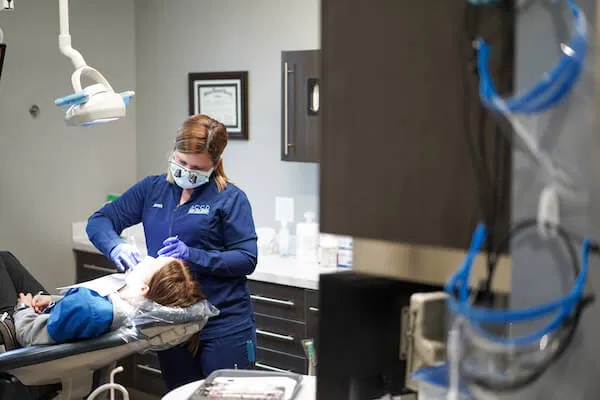Introduction
LASIK treatment has revolutionized the way people view their world by providing a solution to vision problems like myopia, hyperopia, and astigmatism. As more individuals consider this procedure, questions often arise regarding its impact on various aspects of vision, including color perception. Understanding how LASIK affects the ability to perceive colors can help patients make informed decisions and set realistic expectations for their post-surgery vision.
The Basics of LASIK Treatment
LASIK, or Laser-Assisted In Situ Keratomileusis, is a surgical procedure that reshapes the cornea to improve vision. By using a laser, the surgeon removes microscopic amounts of tissue from the cornea, allowing light to be refracted correctly onto the retina. This correction leads to clearer vision, often eliminating the need for glasses or contact lenses. However, it’s essential to consider how this alteration might influence color perception, a topic of great interest among potential LASIK candidates.
How Vision and Color Perception Work
Color perception involves the ability of the eyes to detect different wavelengths of light, which the brain interprets as various colors. The retina contains photoreceptor cells called cones that are responsible for color vision. There are three types of cones, each sensitive to different wavelengths corresponding to red, green, and blue colors. When light enters the eye, it stimulates these cones, sending signals to the brain that combine to produce the perception of color.
The Effects of LASIK on Color Perception
Research indicates that LASIK treatment typically does not have a significant long-term impact on color perception. Most patients report that their ability to see colors remains stable or even improves after surgery due to enhanced overall vision clarity. However, some patients might experience temporary changes in color perception immediately following the procedure. This can be attributed to the healing process and changes in the cornea’s shape as it stabilizes post-surgery.
Temporary Changes After Surgery
After undergoing LASIK, some individuals may notice a slight shift in how they perceive colors, particularly during the initial healing phase. This phenomenon may include a temporary sensitivity to light, glare, or halos around bright objects. Such visual disturbances can create an altered experience of colors, leading to confusion or uncertainty in distinguishing hues.
It’s essential to understand that these changes are usually temporary. As the eyes heal, the brain adapts to the new visual input, allowing for a return to normal color perception. Most patients find that any temporary disturbances subside within weeks, restoring their ability to see colors as they did before the surgery.
Factors Influencing Color Perception After LASIK
Several factors can influence how LASIK treatment affects color perception:
- Individual Variability: Each patient’s visual system is unique, leading to variations in how their eyes respond to LASIK surgery. Factors such as age, the degree of pre-existing refractive error, and overall eye health play crucial roles in the outcome.
- Quality of the Surgery: The skill and experience of the surgeon significantly impact the procedure’s success. A well-performed LASIK treatment, conducted by an experienced ophthalmologist, is likely to minimize any adverse effects on color perception.
- Pre-existing Conditions: Individuals with pre-existing conditions such as cataracts or retinal issues may experience different outcomes regarding color perception post-surgery. Addressing these underlying issues is vital for optimal visual health.
The Role of Light and Environment
Lighting conditions can also affect color perception following LASIK treatment. Natural light, fluorescent lighting, and incandescent lighting all produce varying effects on how colors are perceived. After LASIK, patients may notice differences in their color perception in different lighting situations, especially if they are accustomed to a specific environment prior to surgery.
To adjust to these changes, it’s helpful for patients to spend time in various lighting conditions and observe how their perception of color shifts. This process not only aids in adaptation but also encourages a better understanding of the visual experience post-surgery.
Psychological Factors and Color Perception
The psychological aspect of vision should not be overlooked when discussing LASIK treatment. Anxiety about undergoing surgery or concerns about potential outcomes can influence a patient’s perception of color. Stress and apprehension may lead to heightened awareness of visual disturbances, including changes in color perception.
Encouragement and education from healthcare providers can help alleviate these fears. Patients should be reminded that color perception typically stabilizes after the initial healing period, allowing them to enjoy their restored vision fully.
Adjusting Expectations
It’s essential for patients considering LASIK to approach the procedure with realistic expectations regarding their visual outcomes. While many individuals experience significant improvements in their vision, understanding that temporary changes in color perception may occur can help prepare them for the postoperative experience.
Consulting with a qualified eye care professional can provide valuable insights and help manage expectations. A comprehensive pre-operative assessment can identify any specific risk factors or concerns that might affect visual outcomes, including color perception.
Conclusion
In summary, LASIK treatment offers a promising solution for those seeking to enhance their vision. While some patients may experience temporary changes in color perception during the healing process, most report a return to normalcy as their vision stabilizes. It’s crucial for patients to stay informed and consult with experienced professionals to address any concerns.
For those considering LASIK, the journey toward clearer vision is one filled with anticipation and hope. Maxivision Eye Hospitals is dedicated to providing the best eye care treatment, ensuring that every patient receives the attention and expertise necessary for optimal visual health.









